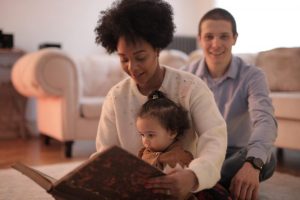Black History Month: Beyond February
By Heather Watts

When I graduated from Columbia University with a Master of Arts degree, I held the belief that teachers with similar educational backgrounds as I, serving the same student population as I, would hold the same beliefs about the importance of teaching diverse world-views in this country, and teaching about the history that is often erased to maintain a Euro-Western perspective.
The Conversation That We Need to Have
By Shamim Ahmed

I was sitting on the couch, reading a popular “Bengali”[1] fiction, and all of a sudden heard my daughter mumbling “brutal”. I looked at her once, and again went back to my reading when I heard her infuriatingly saying “that’s totally unacceptable”. I took a pause from my reading, sat back properly, looked at the television and saw that horrid image of a policeman sitting on the road with his knee placed firmly on a person’s neck with a stone face. I was a little startled whether my 12-years old daughter should be watching this, but then she left on her own without saying much. I inquisitively continued to watch the news and came to know about the horrific act of killing George Floyd, a 46-year-old black American, during an arrest for allegedly using a counterfeit bill. To be frank, I came to know about the allegation at least two weeks after the killing, as I was not curious about the reason why a person could be killed so brutally. I had no idea why a person should be treated so inhumanely as if he was not a living object. I was shocked.
How to Talk to Your Kids About Racism
By Amanda Cheung
Originally published on the University of Toronto’s Family Care Office Blog, Intersections.

Race is a complex but necessary topic we should be considering to discuss in our homes, and especially with our children. We know that many families are beginning to have these difficult conversations with their kids. The Family Care Office has compiled a list of resources to help support discussions about race and equality with young people.
Raising and Teaching Anti-Racist Kids
By OISE Library Staff
Originally published on the University of Toronto’s Ontario Institute for Studies in Education blog.
The deaths of George Floyd, Breonna Taylor, Ahmaud Arbery, and Regis Korchinski-Paquet have brought much-needed attention to the racist policies and systems that harm Black people in the United States, Canada, and throughout the world. Many parents and educators are wondering how best to speak to children about race and racism, and how to educate for antiracism and for Black Lives. The University of Toronto Libraries and the OISE Library are here to help parents and teachers find the resources they need and to feel empowered as educators.


